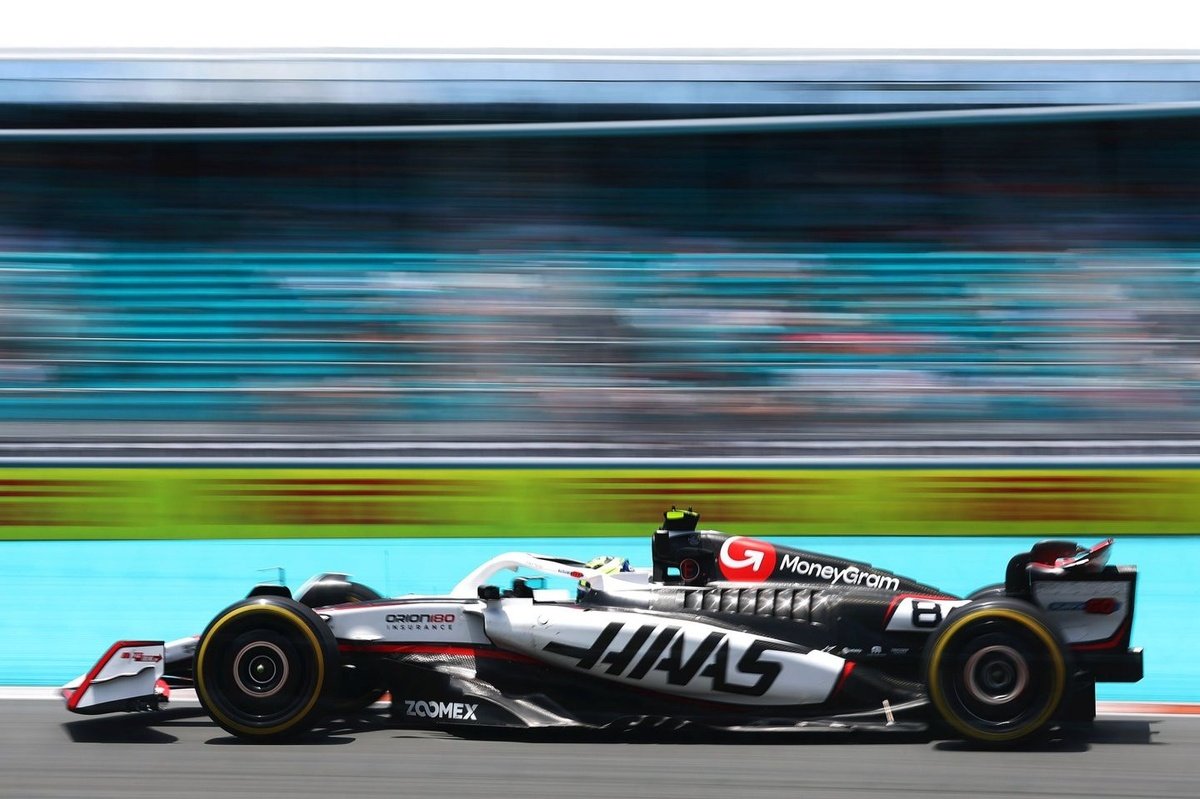
“Till we begin operating, it’s fairly nerve-wracking – that’s the trustworthy reply.”
Haas crew principal Ayao Komatsu was usually frank when requested in Miami concerning the squad’s progress in understanding the instability that plagues its automotive in high-speed corners.
The crew fast-tracked some experimental floor tweaks for the Japanese Grand Prix weekend, shortcutting the same old simulation procedures in doing so. However whereas this appeared to mitigate the VF-25’s tendency to enter a part of vertical oscillation in high-speed corners, the crew continues to be unable to forecast precisely when it should happen – and at what circuits it’s most certainly to occur.
That’s why it has to run the automotive to search out out, which prices important monitor time – much more damaging in dash weekends the place there is just one follow session.
“Should you had a normal weekend, most of Friday, or I might say at the very least half of Friday, we’re attempting to grasp if we have that challenge or not,” stated Komatsu, “after which the place we are able to run the automotive [in terms of ride height, etc].
“Whereas we should always have the ability to put the automotive on the monitor in FP1 when it comes to our platform, then work on tyres, work on the stability. However we’re kind of one session behind on that – in order that makes it even more durable for the dash weekends.”
The phenomenon of high-speed oscillation has troubled numerous groups for the reason that introduction of the present ground-effect ruleset. To realize peak downforce the automotive has to run as near the monitor floor as potential, but when it will get too shut and the underfloor airflow ‘stalls’, the automotive can enter a cycle of uncontrolled vertical oscillation.
Ayao Komatsu, Haas F1 Group
Picture by: Peter Fox / Getty Pictures
Mitigating this requires an interaction of aerodynamics and suspension kinematics. It’s troublesome to simulate, which is why Haas was caught without warning when the phenomenon occurred within the first spherical of this season.
Within the second spherical, in China, the smoother monitor floor and relative shortage of high-speed corners meant the issue did not present itself however that didn’t imply it was solved – or that the crew had understood why it was occurring. Regardless of the approaching arrival of an improve bundle for the following spherical, at Imola, Haas doesn’t but have a full understanding of why the VF-25 is behaving as it’s.
“I would not say [we have a] utterly full grasp,” stated Komatsu, “as a result of if we did, I feel we may very well be assured that sooner or later we are able to carry an answer that utterly eradicates the problem.
“Sure dimensions we perceive, however I do not suppose we perceive each single dimension… there’s some query marks over how the dynamics get, for example, initiated.
“I would not say we’re utterly on prime of it. However each time we’re operating, it is higher.
“If we are able to get that robustness and consistency, then I feel we are able to battle within the midfield constantly – that is our goal. Whether or not the Imola bundle achieves that or not, I do not know.”
Stay up to speed with the latest F1 Miami Grand Prix information, professional evaluation, pictures and movies. Be a part of us for Sunday’s watch alongside on Race Heart Dwell by signing up here.
On this article
Be the primary to know and subscribe for real-time information electronic mail updates on these subjects
Subscribe to news alerts
Trending Products




